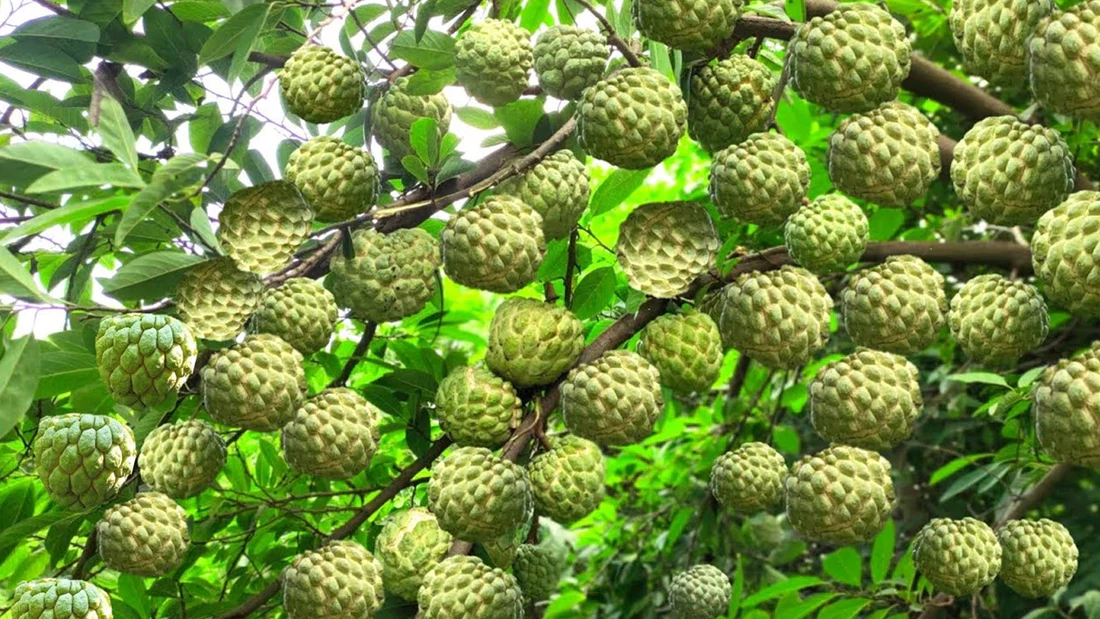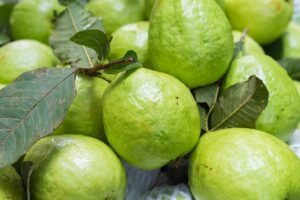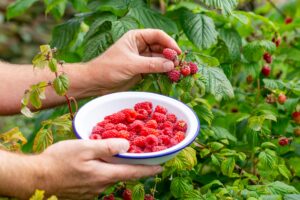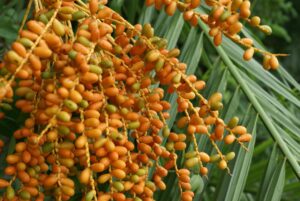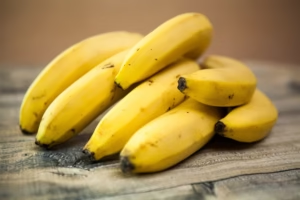How to Grow and Care for Sugar Apple: The Complete Guide
Sugar apple (Annona squamosa), also known as sweetsop or custard apple, is a delicious tropical fruit that’s gaining popularity in the US market. With its sweet, custard-like flesh and unique flavor profile, this exotic fruit can be a rewarding addition to your garden, especially if you live in USDA hardiness zones 10-11. This guide will walk you through everything you need to know about growing and caring for sugar apple trees in different settings.
Understanding Sugar Apple Trees
Before diving into cultivation methods, it’s important to understand what makes sugar apple trees unique. Native to the tropical Americas and West Indies, sugar apple trees are small to medium-sized, typically growing 15-20 feet tall. They produce unusual, heart-shaped or round fruits with a scaly, knobby exterior that breaks apart easily when ripe, revealing creamy white, sweet-tasting segments inside.
According to the USDA Agricultural Research Service, sugar apples are not only delicious but also nutritionally valuable, containing significant amounts of vitamin C, calcium, and phosphorus.
Sugar Apple Varieties for US Growers
Several sugar apple varieties perform well in the United States, particularly in Florida, Hawaii, Southern California, and parts of Texas. Here are some recommended cultivars:
- Kampong Mauve: Known for its purple-tinted fruit and excellent flavor
- Thai Lessard: Produces large fruits with fewer seeds
- Purple: Recognized for its distinctive purple-tinted skin
- Gefner: Notable for its resistance to fruit splitting
Growing Sugar Apple Trees from Seed
While professional growers often use grafting to propagate sugar apple trees, you can successfully grow them from seeds at home. Here’s how:
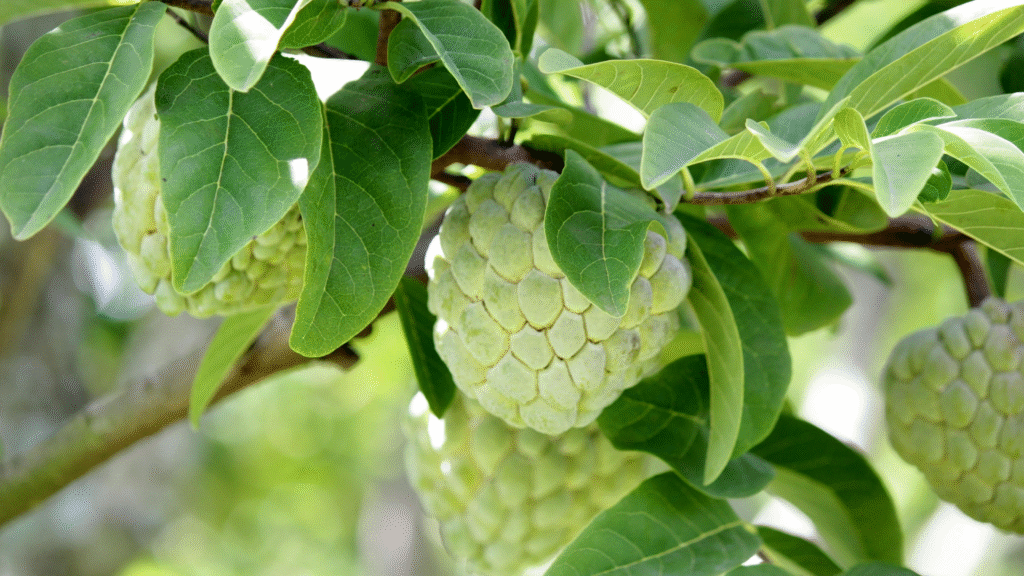
Seed Collection and Preparation
- Obtain fresh seeds from a ripe sugar apple fruit
- Clean the seeds thoroughly, removing all fruit pulp
- Dry the seeds in a shaded area for 2-3 days
- Soak the seeds in warm water for 24 hours before planting
Planting the Seeds
- Fill a seed-starting container with well-draining potting mix
- Plant seeds 1 inch deep and 2 inches apart
- Keep the soil consistently moist but not waterlogged
- Maintain temperatures between 75-85°F (24-29°C)
- Expect germination within 30-45 days
Seedling Care
Be patient with your sugar apple seedlings, as they typically grow slowly in their first year. Once seedlings reach 8-10 inches in height, transplant them to individual pots with a diameter of at least 12 inches.
Container Growing Guide
Sugar apple trees can thrive in containers, making them accessible to gardeners outside of tropical zones. Container growing also allows you to move plants indoors during colder months.
Choosing the Right Container
Select a container that is:
- At least 15-20 gallons in capacity
- Has adequate drainage holes
- Is made of a durable material like plastic or ceramic
Potting Mix Recipe
Create a well-draining potting mix by combining:
- 40% high-quality potting soil
- 30% perlite or pumice
- 20% coconut coir
- 10% compost or worm castings
Container Care Requirements
| Care AspectRequirements for Container-Grown Sugar ApplesSunlightMinimum 6-8 hours of direct sunlight dailyWateringWhen top 2 inches of soil feels dry (typically 2-3 times weekly in summer, less in winter)FertilizationBalanced (8-8-8) fertilizer every 2 months during growing seasonTemperatureMaintain above 55°F (13°C); protect from frostHumidity60-80% ideal; mist leaves regularly in dry conditionsPruningAnnual light pruning to maintain size and shapeRepottingEvery 2-3 years or when roots become crowded |
|---|
Growing Sugar Apples in the Garden
If you live in a suitable climate, growing sugar apples directly in your garden can lead to larger, more productive trees.
Site Selection
Choose a planting location that offers:
- Full sun exposure (minimum 6 hours daily)
- Protection from strong winds
- Well-draining soil
- Spacing of at least 15-20 feet from other trees
Soil Preparation
Sugar apples prefer slightly acidic to neutral soil (pH 6.0-7.0) with excellent drainage. Before planting:
- Test your soil pH using a home test kit
- Amend heavy clay soils with compost and sand to improve drainage
- Add lime if your soil is too acidic, or sulfur if it’s too alkaline
- Incorporate 2-3 inches of organic matter into the planting area
Planting Process
- Dig a hole twice as wide and as deep as the root ball
- Remove the tree from its container, gently loosening circling roots
- Place the tree in the hole, ensuring the top of the root ball is level with the soil surface
- Backfill with soil, tamping gently to remove air pockets
- Create a watering basin around the tree
- Apply 2-3 inches of mulch, keeping it away from the trunk
- Water thoroughly after planting
Ongoing Care for Sugar Apple Trees
Whether grown in containers or in the ground, sugar apple trees require attentive care to produce abundant, high-quality fruit.
Watering Guidelines
- Young trees: Water 2-3 times per week during the first year
- Established trees: Water deeply when the top 3 inches of soil becomes dry
- Reduce watering during winter dormancy
- Avoid overhead watering, which can promote fungal diseases
Fertilization Schedule
Follow this fertilization program for optimal growth:
- Young trees (1-2 years): Apply a balanced fertilizer (10-10-10) every two months during the growing season
- Mature trees: Apply fertilizer three times per year:
- Early spring (before flowering)
- Early summer (during fruit development)
- Fall (after harvest)
For specific nutrient requirements, consult the University of Florida’s Extension Service guidelines on tropical fruit tree fertilization.
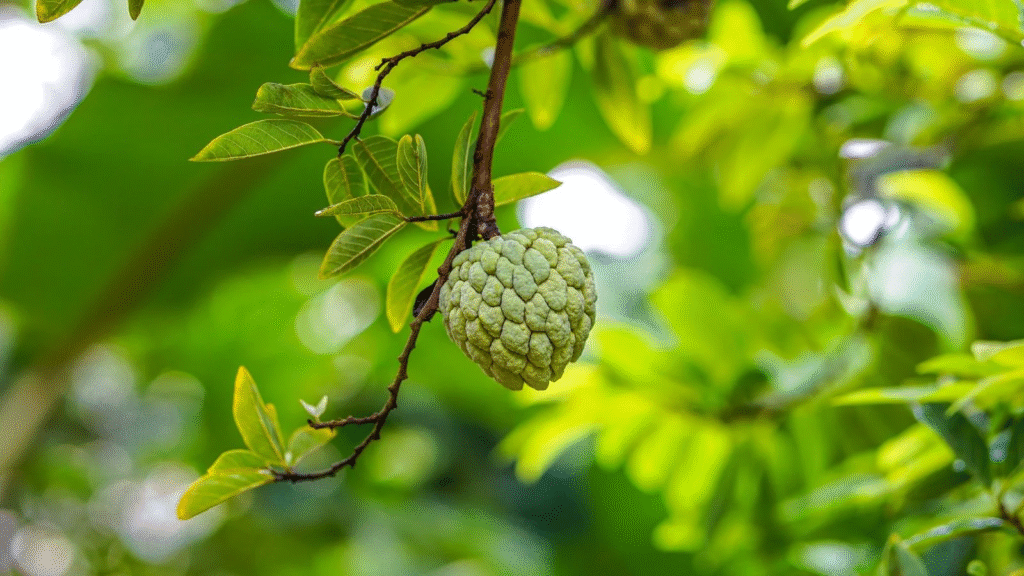
Pruning Techniques
Sugar apple trees benefit from regular pruning to:
- Remove dead or diseased branches
- Improve air circulation
- Control tree height and spread
- Enhance fruit production
The best time to prune is during late winter or early spring before new growth begins. Use clean, sharp pruning shears and make cuts at a 45-degree angle.
Pest and Disease Management
Sugar apple trees can be affected by various pests and diseases, but with proper monitoring and management, these issues can be minimized.
Common Pests
- Mealy bugs: Control with insecticidal soap or neem oil
- Scale insects: Remove with a soft brush and apply horticultural oil
- Fruit flies: Use pheromone traps and bag developing fruits
- Ants: Create barriers with diatomaceous earth or sticky tape
Disease Prevention
Sugar apple trees are susceptible to:
- Anthracnose: Prevent by improving air circulation and avoiding overhead watering
- Root rot: Ensure proper drainage and avoid overwatering
- Leaf spot: Remove affected leaves and apply appropriate fungicide
The USDA Plant Database provides valuable information on identifying and managing specific diseases affecting Annona species.
Harvesting and Using Sugar Apples
With proper care, your sugar apple tree should begin producing fruit within 2-4 years (or 3-5 years for seed-grown trees).
When to Harvest
Sugar apples are ready to harvest when:
- The fruit yields slightly to gentle pressure
- Segments begin to separate slightly
- The color changes from green to yellowish-green
- A sweet aroma develops
Harvesting Technique
- Gently twist the fruit from the branch
- Handle carefully to avoid bruising
- Place harvested fruits in a single layer in a shallow container
Post-Harvest Handling
- Store unripe fruits at room temperature until they soften
- Once ripe, refrigerate for up to 2-3 days
- For best flavor, allow refrigerated fruits to return to room temperature before eating
Culinary Uses
Sugar apples are most commonly enjoyed fresh, but they also work well in:
- Smoothies and milkshakes
- Ice cream and frozen desserts
- Fruit salads
- Custards and puddings
- Traditional Latin American desserts
Market Potential in the US
The market for exotic tropical fruits like sugar apples continues to grow in the United States, particularly in areas with large Latin American and Asian communities. According to the USDA Agricultural Marketing Service, specialty tropical fruits represent an expanding niche market with significant growth potential.
Marketing Opportunities
If you’re considering commercial production, explore these channels:
- Farmers’ markets in urban areas
- Specialty grocery stores
- Direct sales to high-end restaurants
- Online sales of fresh fruit (in-state only due to quarantine restrictions)
- Value-added products like sugar apple preserves or ice cream
Troubleshooting Common Issues
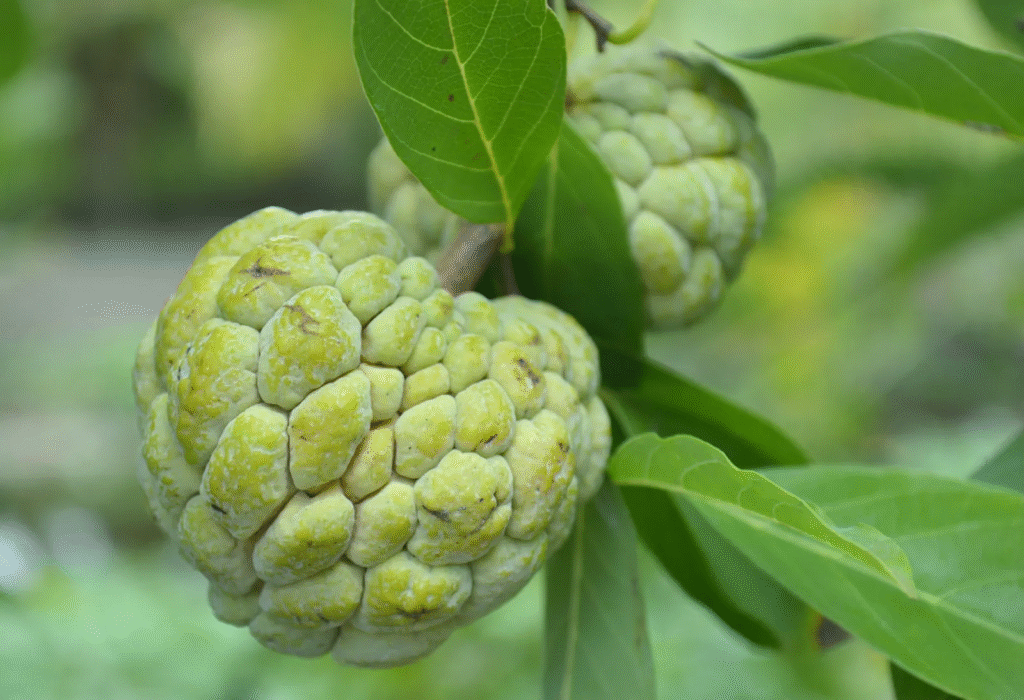
Poor Fruit Set
If your tree flowers but doesn’t produce fruit, consider:
- Insufficient pollination (hand-pollinate using a small brush)
- Extreme temperature fluctuations during flowering
- Inadequate fertilization
- Too much nitrogen (promotes vegetative growth at the expense of fruit)
Fruit Drop
Premature fruit drop may be caused by:
- Water stress (either too much or too little)
- Nutrient deficiencies
- Pest damage
- Extreme weather conditions
Slow Growth
If your sugar apple tree isn’t growing as expected:
- Check for root-bound conditions in container plants
- Evaluate soil drainage
- Test soil for nutrient deficiencies
- Ensure adequate sunlight exposure
Conclusion
Growing sugar apple trees can be a rewarding experience, whether you’re a home gardener looking to enjoy these exotic fruits or considering small-scale commercial production. With proper site selection, regular care, and attention to the tree’s specific needs, you can successfully cultivate this tropical treasure even in container gardens.
Remember that patience is key—sugar apple trees may take several years to begin fruiting, but the unique flavor and texture of home-grown sugar apples make the wait worthwhile. By following the guidelines in this article, you’ll be well-equipped to grow and care for sugar apple trees in various settings across suitable regions of the United States.
